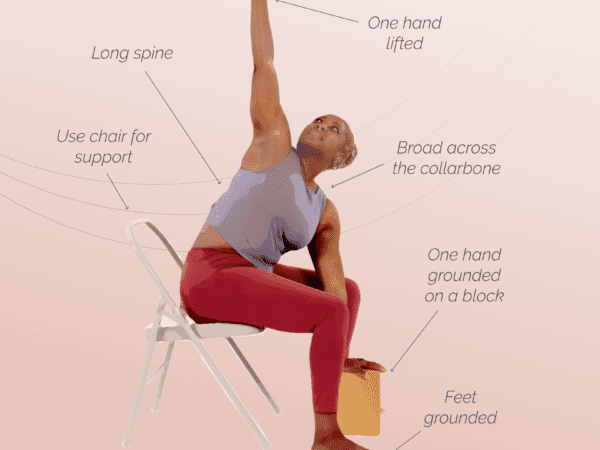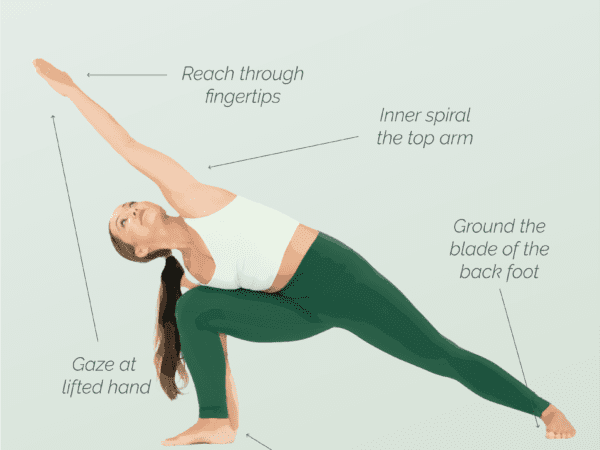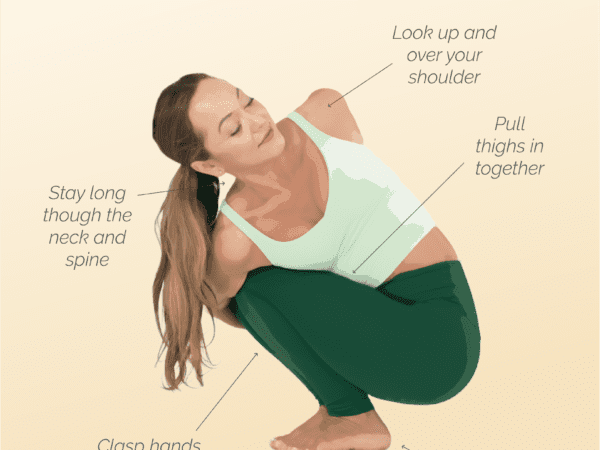Sphinx pose is an excellent yoga pose for strengthening and stretching the abdominal, hip, chest, and shoulder muscles. It is great for those looking to increase their overall flexibility, as well as for those looking to improve their spinal mobility for deeper back bending poses like dhanurasana (bow pose). Practicing a backbend like sphinx pose can help you feel more energized throughout your day. In this article, we’ll provide you with step-by-step instructions on how to perform the sphinx pose correctly and safely.
Benefits of sphinx pose
Sphinx pose, also known as salamba bhujangasana, is a yoga posture that has many physical and mental benefits. Physically, the sphinx pose can help strengthen the spine, upper body, and core muscles, while also opening the chest and lungs. The opening of the chest and lungs improves your breathing capacity. It can also help with digestion. When practiced correctly, it can also soothe lower back pain. Don’t worry, we’ll like at how to do the pose correctly later in this article. Performing backbends correctly is essential to preventing injuries.
On the mental side, sphinx pose can be used to promote concentration and mental clarity. It can be used as a calming and grounding exercise to help reduce stress and anxiety. Finally, this pose can help improve posture and alignment, making it a great addition to any yoga practice.
Contraindications for sphinx pose
The sphinx pose should be avoided if you are suffering from any type of upper-body injury. If you have any neck problems or spondylitis you should not do this pose. It should also be avoided if you have medical conditions such as high blood pressure, glaucoma, or sciatica. Additionally, if you are pregnant, you should consult your doctor before attempting this pose.
What muscles are used when doing the sphinx pose?
Before we get into doing the pose, let’s look at what muscles we use to do it. Understanding which muscles you’ll engage and stretch in the posture beforehand will give you a better sense of how to do the pose once you’re on your mat.
The primary muscles worked in the sphinx pose are the rectus abdominis, the oblique muscles, and the gluteus maximus. Additionally, your lower back muscles and chest muscles are engaged throughout the duration of the pose. This pose stretches and strengthens your core and upper body muscles.
How do I correctly get into a sphinx pose?
Begin by lying on your stomach with your legs extended and the tops of your feet facing the ground. Place your elbows directly below your shoulders and press your palms into the ground. Your forearms should be parallel, and your elbows should be shoulder-distance apart.
Inhale and engage your core and lift through the chest. Keep your shoulder blades down your back. Think of your back lengthening, creating space between each vertebra.
Make sure to keep your shoulders and upper back relaxed and away from your ears.
Gently press the top of your feet, legs, and hips into the ground. Keep your neck long without letting your chin jut out, and continue reaching your chest forward.
Hold the pose and inhale and exhale slowly. Stay here for 5-10 breaths and then slowly come down.
To make the pose more challenging, you can rest your forearms on a block or folded blanket. You can also lift your legs, arms, or both off the floor.
What modifications can I make to the sphinx pose?
Sphinx pose standing at the wall
If you are having difficulty doing sphinx pose on the floor, you can use a wall to make the post a little easier for you. Start by standing a few inches away from the wall, facing it. Put your forearms on the wall with the elbows in line with the shoulders, just like you would if doing the pose on the floor. Lift through the chest and press your hips gently toward the wall.
Hold the pose for 5-10 breaths and then slowly come down. Be sure to keep your core engaged throughout the duration of the pose to ensure proper form.
Practicing the pose standing up requires less movement in the spine and will help you build up the strength and flexibility you need to do the pose on the floor.
Sphinx pose with a bolster under the chest
You can place a bolster or a rolled blanket under your chest for additional support. Lie on your stomach with the bolster under your chest and extend your legs.
Place your forearms on the floor, elbows shoulder-distance apart. Press into the forearms to lift your chest. |Make sure to keep your shoulders and upper back relaxed and away from your ears. Hold the pose for 5-10 breaths and then slowly come down.
Sphinx pose with a bolster under elbows
You can also use a bolster or a rolled blanket under your elbows to deepen your backbend. Lie on your stomach and place the bolster or rolled blanket under your elbows. Place your forearms on the bolster with elbows shoulder-distance apart.
Engage your core and lift your chest. Make sure to keep your shoulders and upper back relaxed and away from your ears. Hold the pose for 5-10 breaths and then slowly come down.
Are there any precautions to take when doing the sphinx pose?
Yes, there are several precautions to take when doing sphinx pose. First, to ensure that your lower back is not strained, it is important to keep your hips tucked and your abdominals engaged throughout the duration of the pose. If you have any shoulder or neck injuries, you should avoid pressing too hard with your arms and wrists in order to protect these areas. Finally, be sure to keep your breathing even and relaxed throughout the pose.
Make sure not to collapse your chest down too far or arch your back too much. Also, avoid any jerky movements as this can cause strain or injury. Lastly, if you feel any pain or discomfort, stop immediately and readjust your position.
How long should I hold the sphinx pose?
Sphinx pose is a great yoga posture for strengthening your core muscles. This posture requires you to lie on your stomach with your elbows bent and your forearms resting on the ground. You should aim to hold the sphinx pose for at least 30 seconds, but you can stay in the posture for up to five minutes if you feel comfortable. Remember to breathe deeply while in the pose, and be sure to come out of the posture slowly and mindfully.
Sphinx pose is a great yoga posture for building core strength and stability. With the correct form and mindful breathing, this posture can help to open the chest and create a feeling of well-being. Use the pose modifications if you need to until you feel like you’ve gained the mobility and flexibility to do the pose on the floor without props.
Remember to take precautions when performing this pose, such as engaging your core, avoiding jerky movements, and stopping if you experience any pain or discomfort. It is important to practice mindfully and listen to your body whenever you are trying a new yoga pose. With dedication and practice, you can reap the many benefits of the sphinx pose.









